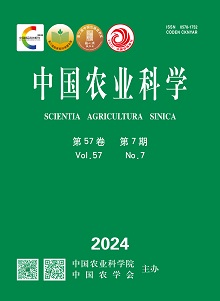【Objective】The objective of this study is find out the difference of electrophysiological responses of potato tuberworm (Phthorimaea operculella) with different sexes and mating states to potato volatiles, and to provide a reference for the chemical ecological control of P. operculella.【Method】Electroantennogram (EAG) responses of virgin female, mated female and unmated male P. operculella to 16 volatile compounds (including 6 aliphatic compounds viz. 1-octen-3-ol,1-butanol, heptanal, octanal, nonanal and decanal, 4 aromatic compounds viz. phenethyl alcohol, phenylacetaldehyde, acetophenone and methyl salicylate, and 6 terpenoids viz. α-pinene, p-cymene, (E)-β-ocimene, 1,8-cineole, (E)-β-farnesene and methyl jasmonate) released from potato tubers and plants were recorded, and the dose-responses to 6 compounds (including 1-octen-3-ol, heptanal, nonanal, acetophenone, methyl salicylate and (E)-β-ocimene) were also conducted.【Result】All the tested compounds could elicit EAG responses of P. operculella. Among them, the aliphatic alcohols elicited significantly greater EAG values in the virgin females and the unmated males, and aliphatic aldehydes elicited significantly greater EAG values in the mated females. However, the terpenoids elicited lower EAG values in all the tested P. operculella. At the dose of 1 000 μg, the same compound elicited varied antennal responses from the P. operculella with different sexes and mating states. Octanal, methyl salicylate and (E)-β-ocimene elicited stronger responses in virgin females than those in the mated females and the unmated males, while heptanal, nonanal and α-pinene elicited stronger responses in the mated females than those in the others. The compounds 1-octene-3-ol, phenethyl alcohol and phenylacetaldehyde elicited stronger responses in the males than those in the females. At the tested dose series (1, 10, 100 and 1 000 μg), EAG responses of P. operculella at 3 physiological states to 6 individual compounds increased with the increase of stimulation dose, and were far from saturation thresholds. For the same compound at different doses, EAG responses of the mated females varied significantly.【Conclusion】The virgin females and the unmated males of P. operculella are more sensitive to aliphatic alcohols, and the mated females are more sensitive to aliphatic aldehydes. However, both the females and males are less sensitive to terpenoid compounds. Among the responses to the individual compound, the mated females are more sensitive to heptanal, nonanal and α-pinene than the virgin females and the unmated males, so are their responses to the same compound at different doses.











